Modern CFO’s Guide to Fintech Use Cases
- The emerging technologies that interest CFOs
- Use cases of AI, IoT, blockchain, predictive analytics, and more
- The tips for a successful digital transformation journey
- Market trends and next steps for finance leaders
CFOs and the World of Technology
Introduction
Technology is an integral part of every business today. This has led many to remark that every business today is a digital business. CFOs who work in such an environment understand that staying on top of technology trends is the key to survive and thrive.
The traditional image of CFOs as naysayers to technology spend, with heavy reliance on numbers to shoot down ideas is an image of the past. CFOs today are deeply strategic and see beyond short-term costs to identify drivers that add value to the business.
According to a study, 51% of CFOs want their organizations to embrace new digital skills. Adapting to emerging technologies is key to future-proofing your business. Evaluating digital technologies and investing in the right ones is a key priority for CFOs, according to Gartner.
CFO 4.0 deeply cares about technology and investigates its use cases, cost-benefits, scalability, and future capabilities. To help you become one among those, we have curated a list of fintech use cases of different emerging technologies such as AI and RPA in this eBook.
Before we explore the use cases, let us look at the key technologies that interest CFOs. We’ll also explore the concept of Finance 4.0 and autonomous finance systems.

Technologies that CFOs consider as worth their investment
CFOs are exploring the uses of technology to improve business operations. They’re involved in a variety of projects such as implementing artificial intelligence and machine learning, expanding robotic process automation (RPA), building data governance structures, and ensuring cybersecurity. Here’re some key technologies that CFOs seek to integrate into their systems to build an autonomous finance structure for the future.
What is autonomous finance?
Autonomous finance can be defined as the ability to run day-to-day finance functions with minimal human intervention. Forrester defines the term as ‘algorithm-driven financial services that make decisions or take action on a customer’s behalf.’ Autonomous finance is driven by technologies such as cloud, robotic process automation (RPA), advanced analytics, natural language processing (NLP), and AI.
Cloud
Cloud technology provides companies with on-demand computing, data storage, and network capabilities. This helps reduce capital expenses (CAPEX). For finance teams, the cloud offers a means of automating their processes at lower costs.
Robotic Process Automation
RPA solutions help automate specific tasks such as checking emails for payment receipts, matching data records, or sending recurring communications. RPA is often considered the first step that finance executives take to automate processes.
Artificial Intelligence
AI and machine learning tools also help automate processes. But unlike RPA scripts that accomplish only specific tasks, AI tools continuously learn with new datasets and adapt to any deviations from the core process as needed.
Data analytics and visualization
Data is vital to any function today. The volume of data generated and processed rises exponentially every year. Tools that help analyze data and share insights via easy-to-comprehend charts are among the most sought-after technologies by finance teams.
Blockchain
Blockchain technology, though still in its nascent stages, is expected to help in financial reporting, ledger management, and payments. Its immutability makes it a preferred method to build trust, reduce errors, and eliminate fraud.
Internet of Things
Today data, including corporate finance data, is spread over multiple sources including physical devices such as computers, machinery, etc. IoT technologies connect these physical objects so that you no longer have to scout for data but have the objects connect with each other over wireless channels for data sharing. For example, your finance app preparing your balance sheet can connect with sensors on your industrial equipment to get data on depreciation.
In the next chapters, we’ll look at specific use cases for each of the technologies.
RPA - The First Step Toward Automation
What is RPA?
Robotic process automation (RPA) is a software technique that uses software robots to emulate human tasks. These bots use rule-based algorithms to automate repetitive, manual operations.
RPA tools can be used to automate entire processes as well as specific elements of complex processes, making them more cost-effective and simple to adopt. RPA increases the efficiency and productivity of the finance team by automatically acquiring and analyzing transaction data based on a predefined set of rules. Any potential errors or anomalies that the bot detects are highlighted for manual review.
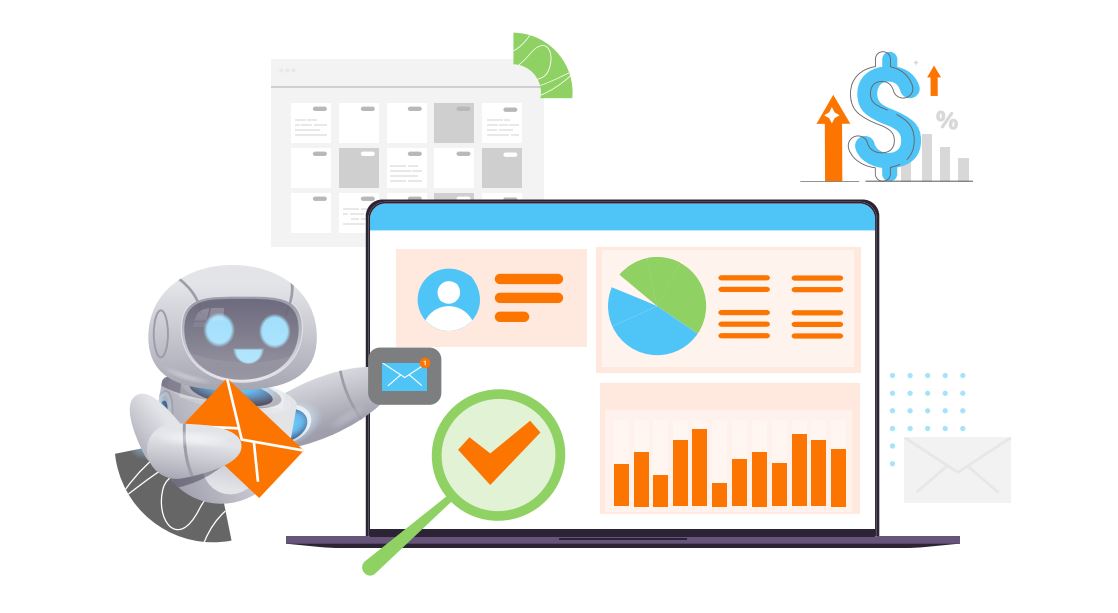
Use cases of RPA in finance
Let’s now look at some tasks that RPA tools help to automate.
Invoice creation and payment matching
Preparing and issuing invoices and matching payments is a fairly repetitive and time-consuming task that demands executives to follow the same pattern each time to complete the job.
RPA helps automate this process using rule-based algorithms that support invoice production and delivery through emails, accounts payable portals, or accounting software like Quickbooks and Xero. The bot also retrieves the relevant data from invoices in an email or folder, reads the required information, and updates it in the ERP system.
Dunning
Dunning is the process of communicating with customers to collect their outstanding dues. Sending hundreds of emails requesting payments could become tedious and even error-prone if done manually.
RPA bots can automatically send emails to the customers based on predetermined rules to remind them of upcoming payments or missing remittance data. This is especially helpful in communicating with low-risk customers where excessive customizations aren’t needed.
Reconciliation and auditing
Finance and accounting teams spend a lot of time reconciling purchase orders and payments with invoices and bank statements. By automatically importing and categorizing transactions, RPA bots can reduce time and eliminate human errors. They can also validate the data and, if necessary, replicate it to other records. RPA bots can also be used for audits, such as matching staff details, assessing risks, and validating financial records.
Financial reporting and compliance management
Manually updating profit and loss (P&L) reports is tiresome and time-consuming. RPA can relieve you of this burden and create accurate reports in real-time.
RPA bots allow you to compile data for financial reporting analysis faster and more reliably. It automates journal entries and account reconciliation and standardizes the report creation process. It also generates alerts in case of errors or non-compliance in operations.
Credit risk scoring
Accounts receivable executives may be short on time or lack the necessary data to examine clients’ credit risk profiles.
With RPA bots you can log into your credit checking program as soon as a new prospect is added to your customer management system. It can then find relevant data such as the customer’s credit risk score, agency ratings from sources such as Dun & Bradstreet(D&B), Yahoo, etc., and store this information in a single repository. RPA algorithms then use this data to segment customers as high, medium, or low risk. The whole process takes less time and effort when done with RPA bots.
Market trends and next steps for finance leaders
According to a report, RPA in financial services market revenue is expected to reach $955.2 million by 2023, growing at a CAGR of 24.5% between 2018-2023.
According to the report, rule-based operations (e.g. repetitive tasks) that RPA helps automate hold a significant market share today. Organizations are deploying RPA software to increase their bottom-line margin.
Steps for successful RPA implementation
- Identify repetitive processes in your finance function. You can try some use cases as discussed above.
- Study if these processes can be automated with RPA tools. Check online sources for info and ask IT experts in your organization their opinion about using RPA for these processes.
- Search and evaluate RPA vendors or off-the-shelf RPA solutions that you can implement readily.
- Measure the success of your RPA implementation by tracking hours saved, costs reduced, and efficiency gains.
Artificial Intelligence and Machine Learning - The Hot Picks
What is Artificial Intelligence?
Artificial intelligence (AI) is the capability of machines to generate insights from unstructured data forms and mimic human intelligence in making decisions. Artificial intelligence technologies include machine learning, natural language processing, and computer vision, among others.
Software tools that are based on artificial intelligence technologies can make judgments and act on their own in different situations. Artificial intelligence helps machines converse with humans (e.g. chatbots), make predictions (e.g. forecasting tools), and solve complex problems.
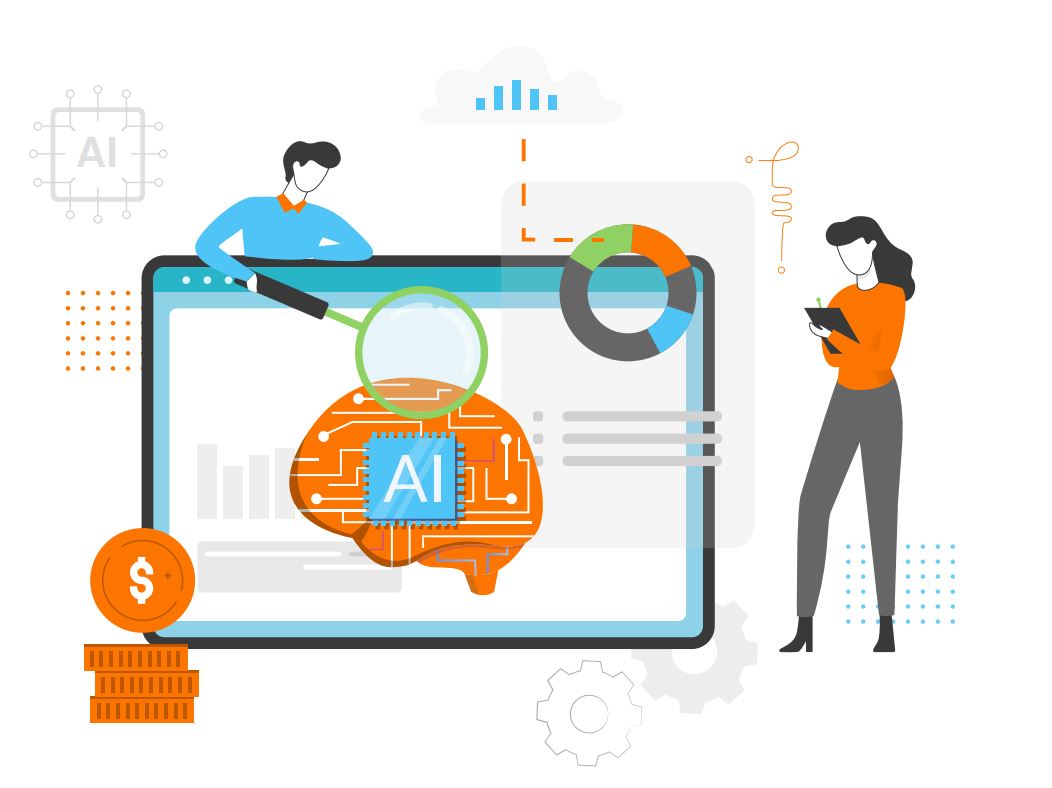
Use cases of AI in finance
Let’s now look at some AR processes that AI helps to automate and simplify.
Cash reconciliation
The reconciliation process involves matching different records accurately. AI-powered reconciliation tools and algorithms search for duplicates, conflicts in date or time, and match records held in numerous files or systems. They help save time and eliminate errors involved in the reconciliation process.
For example, in the cash reconciliation process within the order-to-cash (O2C) cycle, analysts have to match payment data with corresponding invoices, identify deductions, short payments, and parent-child hierarchies.
Rules-based reconciliation tools have their limitations especially when invoice and remittance templates do not follow standard formats or when data is missing or unclear in the documents.
AI-based reconciliation tools, on the other hand, are capable of accurately matching records even when some pieces of information are missing or when the documents are in different formats.
Credit scoring
To move away from gut-based decisions to data-driven decisions, finance teams today use the data they have on customers’ payment histories to create AI-powered models that predict creditworthiness. These models source data from several sources such as client payment pattern trends, financial reports, and third-party ratings to generate customer credit scores.
AI-based credit scoring models are also able to forecast whether a customer would pay on time or default. They also give recommendations around the next steps your team should take to collect payments and reduce bad debt.
Chatbots for customer service
To improve customer service, finance teams now use a number of AI-based solutions. Chatbots are one of the most common AI-based technologies that banks and businesses employ to help clients receive quick answers to their questions. When compared to rule-based chatbots, chatbots built on AI and natural language processing (NLP) systems are more sophisticated and can answer a wider range of questions. This saves time for your finance team, which would otherwise be spent answering tedious, repetitive questions.
Customer onboarding and retention
AI and machine learning techniques also make it easier to onboard customers by automating monotonous operations like filling out forms and validating client information. AI-based algorithms are also being used by businesses to anticipate client attrition and delinquency. To forecast these indicators, you’ll need to go through several enormous datasets. When compared to manual approaches, AI models automate this procedure while also improving accuracy.
Fraud detection and prevention
Artificial intelligence-based systems analyze data in real-time to detect and anticipate fraud, such as money laundering and imposters. By tracking network traffic data and benchmarking it against the usual, AI tools also help to identify security risks like malware attacks.
Portfolio management
AI-based tools can filter through data from a variety of sources and create models that take into account hundreds of variables. This analysis can then be used to predict the returns and risks involved in investing in different financial products. AI-based tools thus help bankers and finance executives make more informed financial and portfolio management decisions.
Automate operating processes
AI solutions are also used to automate daily tasks such as creating reports and tracking key metrics such as receivables, payables, profit targets, and share price fluctuations. These tools automatically notify the appropriate stakeholders in case of any anomalies.
Market trends and next steps for finance leaders
AI in fintech had a market value of $7.91 billion in 2020 and is expected to reach $26.67 billion by 2026, at a compound annual growth rate (CAGR) of 23.17%, according to Mordor Intelligence.
Modern finance teams have expanded their usage of AI to include the automation of internal business operations and for the enhancement of the overall customer experience.
Steps for successful AI implementation
- Identify processes in your finance function that use unstructured data but can be automated.
- Research the costs and challenges in implementing AI-based tools to automate the processes.
- Invest in the data management and governance tools needed for implementing AI solutions.
- Evaluate vendors that offer solutions powered by AI. Implement the solution and track ROI.
If you’re new to AI technologies, consider investing in proven use cases rather than in untested solutions. If you are looking for AI-powered accounts receivable management solutions, HighRadius is a good choice.
Predictive Analytics - Know the Future
What is predictive analytics?
Predictive analytics is a branch of advanced data analytics that forecasts activity, behavior, and trends using current and previous data. It comprises applying statistical analytic techniques, data queries, and machine learning algorithms like regression techniques, pattern analysis, etc. to develop predictive models. These models assign a numerical value to predict the likelihood of a specific action or event occurring.
Predictive modeling helps organizations optimize operations, improve customer satisfaction, manage budgets, identify new markets, anticipate the influence of external events, develop new goods, and establish marketing and pricing strategies.
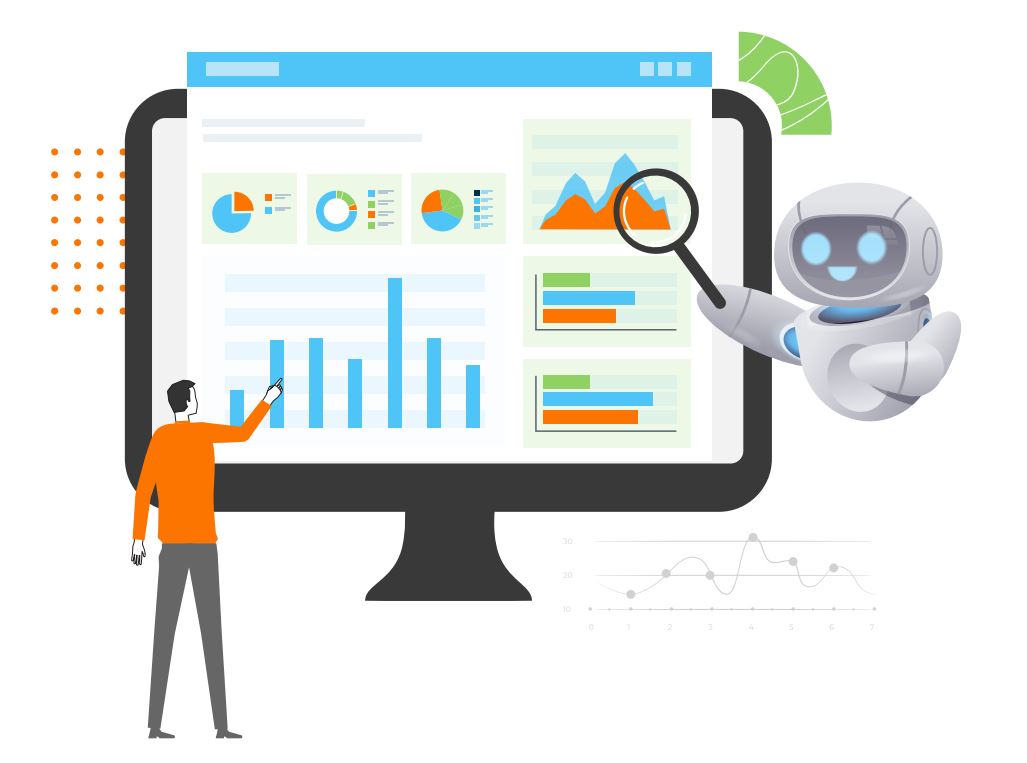
Use cases of predictive analytics in finance
Let’s look at how predictive analytics can be used in different finance functions.
Cash flow forecasting
Predictive analytics-driven cash flow forecasting models give you improved visibility into your cash inflows and outflows. The algorithm predicts the time of your cash inflows and outflows using statistical computations that collect data (e.g. invoice data, past payment trends, etc.), categorize events (e.g., public holidays), and identify affecting variables (e.g., currency exchange rates).
This helps you make better decisions around your investments and client communications.
Customer payment predictions
Selling on credit is risky but unavoidable. Predictive analytics help anticipate if a client will pay on time, make short payments, or require coercion to pay using algorithms that input a range of data including prior payment histories, present financial strength, market conditions, etc.
Payment predictions assist your collectors to prioritize accounts and tailor consumer contacts based on their likelihood of paying. Your collectors can avoid wasting time on customers who are more likely to pay without coercion.
Fraud detection and risk management
Predictive analytics tools detect minute changes in transaction data and aid in the prediction and detection of fraud. It also helps reduce your portfolio risk by forecasting which investments are likely to give higher returns. Predictive models can predict risks associated with certain processes and categorize them based on their impact on the business.
Budgeting and resource allocation
Predictive analytics technology analyzes data from many sources, discovers patterns and trends, and forecasts if the budget will likely produce the required return on investment (ROI). The algorithm analyzes historical data to find repeating patterns and trends and then recommends the best methods to allocate or spend resources.
Market trends and next steps for finance leaders
The global predictive analytics market was valued at $7.32 billion in 2019 and is expected to grow at a CAGR of 21.9 percent from 2020 to 2027, reaching $35.45 billion by 2027, according to Allied Market Research.
Predictive analytics give businesses an edge by helping them utilize their vast wealth of data to forecast future business outcomes and make the best decisions.
Steps for successful predictive analytics implementation
- Define the business results that you want to achieve with predictive analytics tools. (e.g. reduce variability in cash flow)
- Collect all data that is necessary to run the predictive analytics algorithms.
- Prepare, clean, and store the data for modeling.
- Choose off-the-shelf predictive analytics or build your own models.
- Validate the model and implement it in the required processes.
Blockchain Technology and Its Applications
What is blockchain?
Blockchain technology is a decentralized and distributed public ledger that records transactions across a network of computers. Blockchain is safe, transparent, and nearly impossible to alter due to its design and features.
A blockchain keeps a precise, chronological record of all transactions. When a new transaction or block is introduced to the network, everyone on the network receives a copy. Because everyone on the network has a copy, it’s practically hard to change or delete transactions or add data that hasn’t been confirmed.
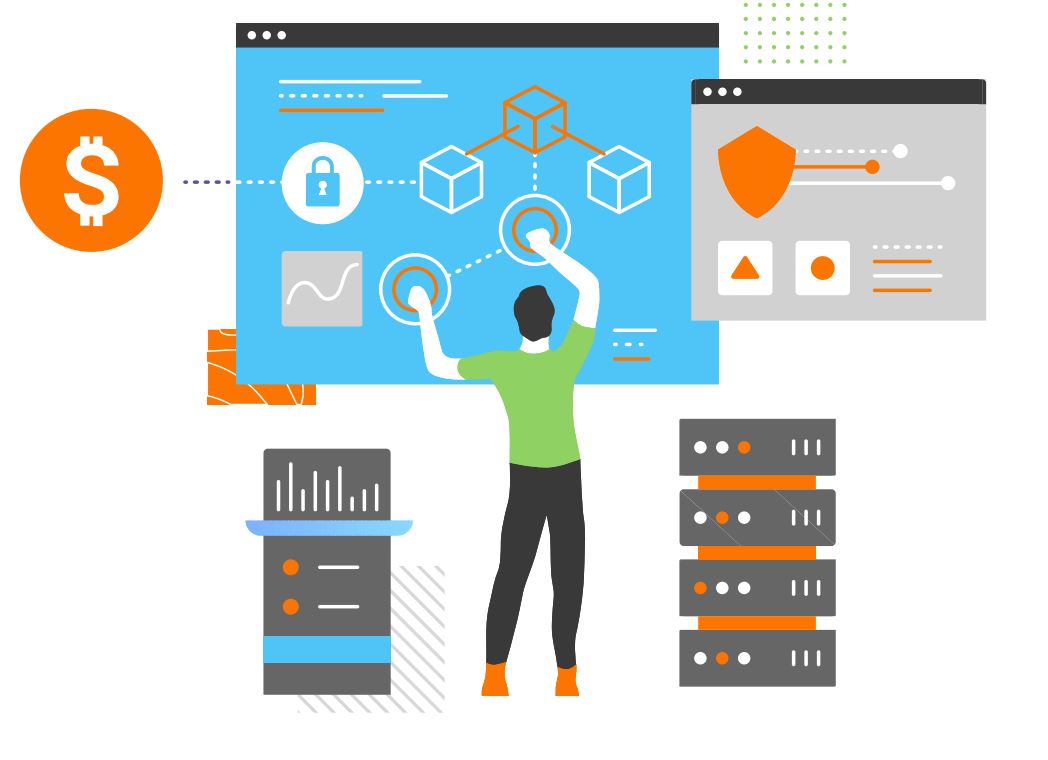
Use cases of blockchain
Let’s look at some use cases of blockchain in finance.
Global payments
Blockchain has made payments across borders easier. Blockchain-based currency networks such as Bitcoin allow individuals to send and receive money with minimum involvement from different entities. Blockchain-based payments are inexpensive, practically instantaneous, secure, and transparent.
Deloitte estimates that business-to-business and person-to-person payments with blockchain result in a 40% – 80% reduction in transaction costs.
Lending platforms
Traditionally, users relied on middlemen to establish trust and complete transactions when lending or borrowing money. With blockchain, borrowers can negotiate directly with lenders on interest rates, installments, and transaction duration using immutable smart contracts. This offers new means of raising capital, paying bills, and managing assets.
Universal credit risk scores
Before proceeding with a loan application, banks and other financial institutions demand an applicant’s credit score. At present, the credit scores of businesses or individuals vary based on the rater and may not be valid in all countries. A universal credit score is necessary to avoid conflicts and this can be achieved by using blockchain.
Using blockchain to manage credit scores can also add transparency to the system. Lenders can access immutable records of financial transactions on the blockchain to determine a person’s or business’s creditworthiness.
Billing solution and invoice management
Blockchain technology is likely to revolutionize e-invoicing.
With blockchain technology, businesses can upload invoices to the blockchain network using smart contracts. The blockchain database helps maintain information such as the payment due date, the amount to be paid, and the client’s details. When the individual pays the bill, the smart contract updates the invoice status to ‘paid’ and notifies the organizations that the payment has been made.
Reporting and recordkeeping
Blockchain technology helps companies to keep immutable records of financial data such as profits, expenditure, dividend distribution, etc. This enables various stakeholders to gain access to relevant information without compromising on security.
Market trends and next steps for finance leaders
The blockchain market is expected to grow at a CAGR of 68.4% from $4.9 billion in 2021 to $67.4 billion in 2026, according to ResearchandMarkets.
Building blockchain infrastructure for multiple use cases that include finance or supply chain management has become a key trend.
Steps for successful blockchain implementation
- Identify a use case within your business processes that can be improved with blockchain technology.
- Create a proof of concept, including minimum viable features and prototypes.
- Choose the blockchain platform most suited for your use case.
- Test the blockchain solution and activate the network.
Note that the implementation of blockchain is still a costly affair and you may want to wait and watch for highly successful use cases before going ahead with a full-fledged solution.
IoT - Connected Devices and Data Sharing
What is the Internet of Things?
The Internet of Things (IoT) is a rapidly expanding network of linked devices that use embedded sensors to collect and exchange data in real time.
IoT technology connects everyday objects—watches, phones, industrial equipment, buildings, and more—to the internet, allowing them to connect with each other to conduct transactions and share information. IoT makes machines smarter, and your processes more efficient.
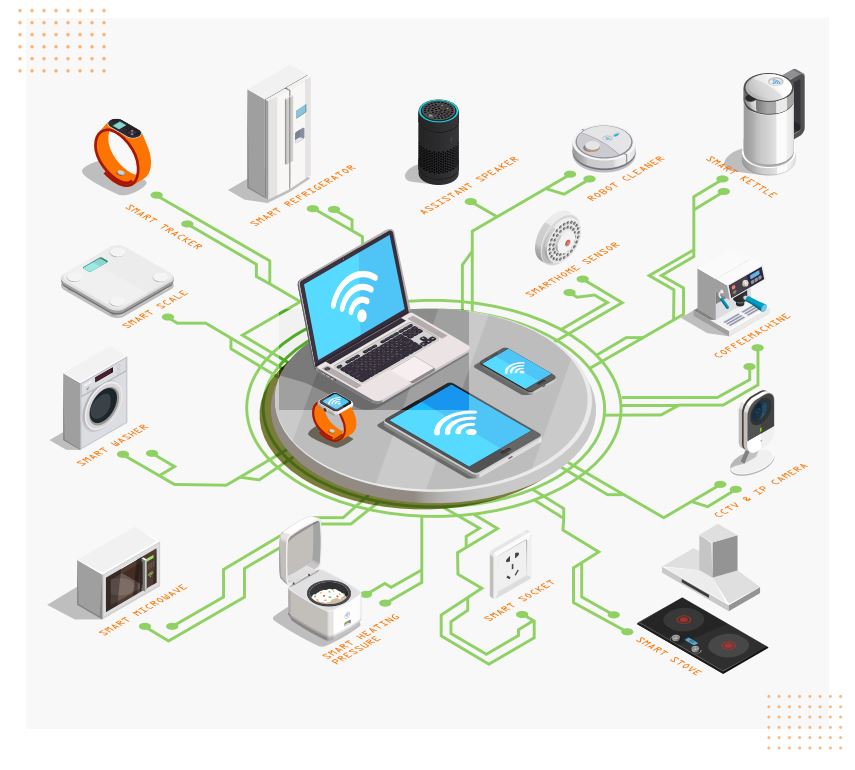
Use cases of IoT
Let’s look at some use cases of IoT in finance.
IoT payments
IoT payments refer to payments made by a device, without human intervention, based on a set of rules. IoT payment platforms allow customers to pay their invoices through a variety of devices not limited to contactless cards, smartphones, and smartwatches. Enabling IoT payments in your amounts receivable process can help elevate customer experiences and make the payment process smoother.
Customer service
IoT devices help provide prompt customer assistance to customers. For example, smartphones (an IoT device) can notify account managers or customer relationship managers when a customer walks into your office. This helps you address customers’ concerns quickly and gain their trust and loyalty.
IoT devices can also help customers navigate your office premises by providing them the directions to the right executive. (e.g. Citibank allows customers to open doors at ATMs with their mobile phones). IoT technology also supports identity management (e.g. Nymi smart wristband utilizes an individual’s heart rate for biometric authentication) and electronic ticketing for query resolution.
Credit risk management
Gather real-time data of clients’ assets using IoT to improve your credit-risk management. It also helps send alerts and notifications to your salespersons and finance teams when they deal with high-risk customers. This will help keep bad debt at a minimum and improve ROI.
Fraud detection
Banks and financial institutions are prime targets of hackers. IoT devices coupled with machine learning (ML) applications help detect anomalies by collecting data from various machines and web applications including payment portals, servers, teller machines, etc. This helps quickly identify instances of fraud and money laundering and take necessary corrective actions.
Auditing
Auditing is crucial to identify any irregularities in the finance processes and to uncover fraud. Traditional auditing methods involve a ton of paperwork.
With the help of IoT, all the transactions can be tracked in real-time and sent to the accounting department. Using IoT, the accountants can easily track the audit trails of all the employees or business units, whether they make a purchase or receive money in real-time. This streamlines the accounting process and lowers the efforts that are otherwise needed for the auditing process. This also ensures that the accounting procedure is efficient and error-free.
Market trends and next steps for finance leaders
The global IoT in the BFSI market is expected to grow from $249.4 million in 2018 to $2,030 million by 2023, at a CAGR of 52.1% during the period, according to MarketsandMarkets.
IoT devices are increasingly used in connected banking and other financial operations including accounts receivables. The rising focus on operations with real-time data flow presents several instances to use IoT technology in finance processes to improve efficiency.
Steps for successful IoT implementation
- Look for proven use cases in finance where IoT is commonly used. e.g. IoT payments
- Strengthen your data management structures to keep up with the enormous amounts of data that IoT devices are expected to generate.
- Implement necessary cybersecurity measures to strengthen your IoT ecosystem.
- Track return on investment (ROI) to measure the success of your IoT implementation.
How CFOs can Make Their Digital Transformation Journey A Success
It is natural to be worried whether you’re investing in the right technologies and spending your money wisely. Investments in the right technologies help your business take the big leap into the future and remain ahead of competitors. It improves the customer experiences that provide, reduces operational costs, and increases the efficiency of your workforce.
In this chapter, we look at some tips to help ensure that your digital transformation is successful.

4 Tips for Successful Digital Transformation
Here’re three tips to help you plan your digital transformation strategy.
Have well-defined goals and a clear vision
Many organizations look at digitization as a quick means to achieve short-term goals such as headcount reduction. This approach fails to leverage the full potential of new technologies such as artificial intelligence. Leveraging emerging technologies to achieve long-term success requires structural changes in your system to support data management, API connections, and integrations with your other in-house systems. Collaborate with different teams to chalk out a clear vision of where you want your company to be and chart out how technology solutions or digital transformation can enable it.
Equip your employees with the necessary skills
Digital transformation will help you reduce the time your employees spend on mundane tasks but it’s not a replacement for the problem-solving, creativity, and presence of mind that your employees bring. Train your employees to be adept at using technology and in driving efficiencies. Let them be the masters who can identify how technology tools will help drive better business outcomes.
Secure your digital investments
Cyber attacks have increased with the increased adoption of digital technologies by businesses. Hackers today use sophisticated technologies such as AI and ML to attack digital objects. Ensure that all your digital investments–cloud, IoT, AI–are protected with necessary security measures such as firewalls, encryption, authentication, and backups.
Partner with reputed IT consulting firms or service providers
Not all organizations will have the required expertise to drive digital transformation initiatives themselves. You’ll need to evaluate third-party consultants, IT software vendors, and service providers to chart out a modernization strategy. You may have to work with more than one vendor to successfully meet your goals for different finance functions such as accounts receivable, accounts payable, accounting, and reporting.
Download Now
